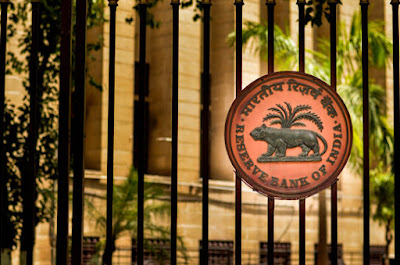Imagine the following case: You have two choices if you want to purchase an automobile. The first is a dated, inflexible pricing structure that occasionally deviates from the movements of the market.
 |
| Source: Adobe Stock |
The second option is a dynamic pricing model that responds to market activity and gives you a more precise view of the situation right now. When deciding to use the Repo Rate as its main instrument for monetary policy instead of the Bank Rate, the Reserve Bank of India (RBI) had to make a similar decision.
We shall examine the causes of this important change and its effects on the Indian banking industry in this essay.
A Historical Perspective
Before we get into the actual transfer, let's take a moment to grasp the RBI and the Bank Rate, the two main participants in this change. The RBI, often known as the central bank of India, is in charge of controlling the nation's money supply and maintaining its level of economic stability.
On the other hand, the Bank Rate was the conventional tool employed by the RBI to regulate the money supply and affect interest rates.
The Bank Rate
The cost of borrowing money from the RBI was determined by the "Bank Rate," which functioned like a fixed price tag. Regardless of the state of the market, banks may borrow money from the RBI at this rate. Although it was a simple strategy, it had drawbacks.
1. Inflexibility: The Bank Rate was set inflexibly and did not adapt to the shifting economic landscape. Due to its lack of flexibility, the RBI found it difficult to promote or restrain economic development as needed.
2. Disconnection from Market: The Bank Rate frequently remained disassociated from interest rates in the market, rendering it a useless instrument for regulating inflation and credit flow.
The Development of Repo Rate
The RBI developed the Repo Rate and the Reverse Repo Rate as its main instruments for monetary policy in response to these restrictions. The Repo Rate is the price at which banks can sell their government assets to the RBI in order to get short-term funding. Here's why this switch changed everything:
1. Market Alignment: The Repo Rate is market-linked, which implies that it changes in accordance with the state of the market. As a result, it may be used more effectively to affect the cost of borrowing for banks and, as a result, for consumers.
2. Precision contain: The RBI may more precisely manage monetary policy to contain inflation, spur economic development, or cool down an overheated economy by altering the Repo Rate.
3. Transmission of Policy Modifications: The Repo Rate acts as a standard for other market interest rates. Banks and other financial institutions are immediately alerted when the RBI adjusts the repo rate, and they are then compelled to modify their lending and deposit rates appropriately.
4. Transparency: The RBI's policy actions are now more transparent as a result of the switch to the repo rate. The general public and market players benefit from this transparency because it fosters confidence.
The Ripple Effect: Important Information for Banks
The primary channel for spreading the RBI's monetary policy to the general public is banks. Let's examine their reaction to this change:
1. Interest Rate Symphony: Bank lending and deposit rates now follow the Repo Rate's beat, providing a more seamless transition of changes in monetary policy to consumers.
2. Liquidity Masterclass: The Repo Rate provides banks with a dependable instrument for managing their short-term liquidity needs, fostering stability in the banking industry.
3. Risk Management Emphasis: In a rate environment where the market sets the rates, banks are urged to strengthen their risk management procedures, which makes them more wary of sudden changes in interest rates.
Conclusion
The RBI shows its commitment to navigate India's economic terrain more effectively by switching from the Bank Rate to the Repo Rate. The Repo Rate becomes a powerful tool for controlling inflation, fostering economic growth, and guaranteeing financial stability by adjusting to market dynamics.
Consider it as an investment in a more adaptive, versatile vehicle for your financial trip. The RBI is now empowered to set a course for a successful and secure future thanks to the switch to the repo rate.
This change has a knock-on effect that helps both banks and customers, putting us all that much closer to financial security. With the Repo Rate serving as our compass as we continue on our trip, we are better prepared to negotiate the curveballs that lie ahead.
Written by - Bhawneet Kaur
(This article has been authored exclusively by the writer and is being presented on Eat My News, which serves as a platform for the community to voice their perspectives. As an entity, Eat My News cannot be held liable for the content or its accuracy. The views expressed in this article solely pertain to the author or writer. For further queries about the article or its content you can contact this email address -bhawneetkaur02@gmail.com)









0 Comments